
This summer, Ampere unveiled the 128-core ARM Altra Max processor. And in the spring, it also announced the industry's first 80-core Ampere Altra processor. Back then, it was reported that it was designed to run in server hardware, not consumer devices.
Recently it became known that the company sent out two-socket Mount Jade platforms to various observers. ARM supporters can be happy - the test results are positive. In a number of tests, the chips do not lag behind their x86-64 counterparts, and in some ways even surpass them.
What is Ampere Altra
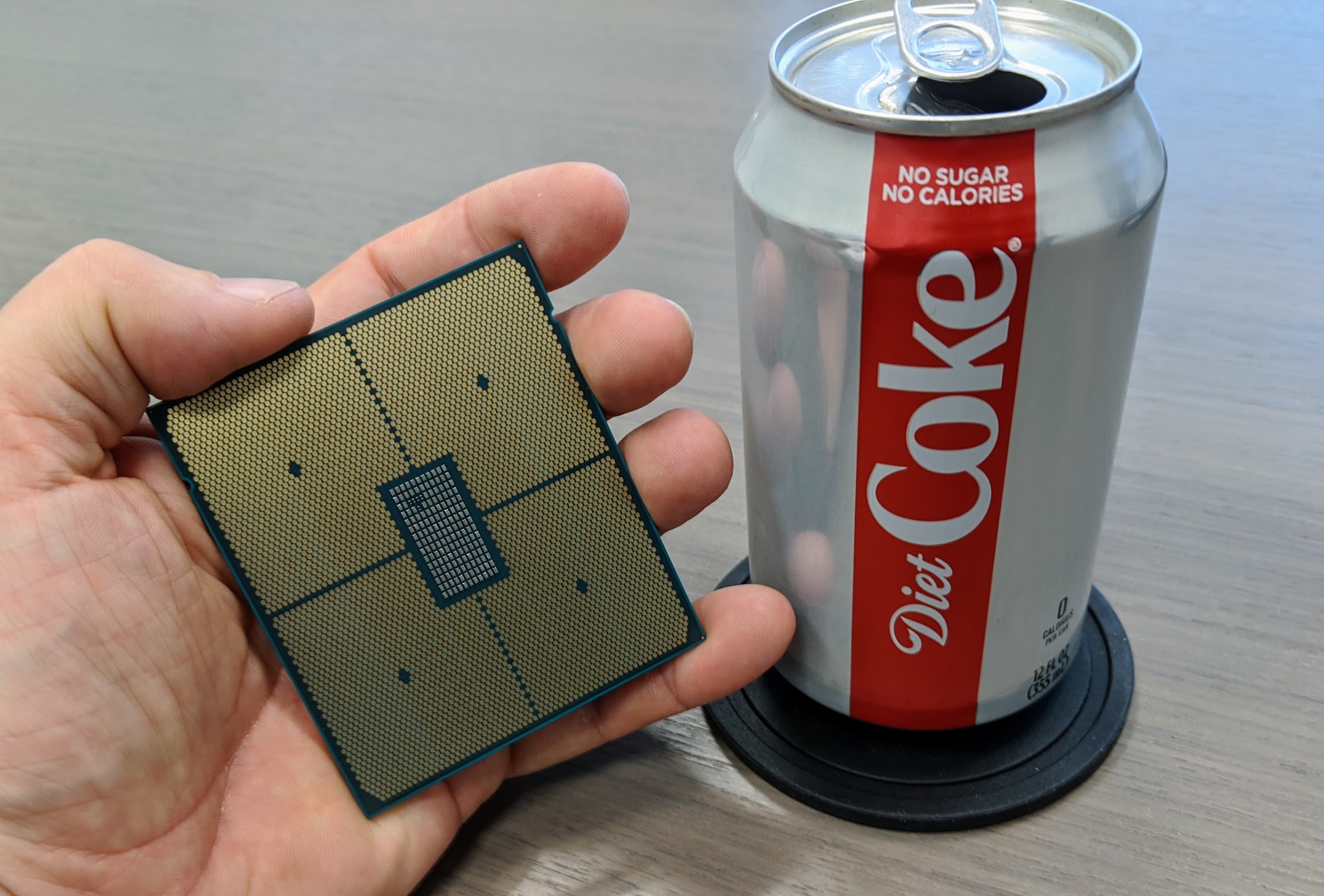
Chips from this lineup have up to 80 cores with ARM v8.2 + architecture (with some improvements from v8.3 and 8.4 sets), interconnected by the Arm CoreLink CMN-600 mesh bus. In addition, there is also an advanced cache system. These are 64 + 64 KB L2, 1 MB L2 and up to 32 MB total L3. The memory subsystem has 8 DDR4-3200 channels (72-bit, 2DPC, up to 4 TB in total).
Since the chip is positioned as adapted to server applications, including big data analytics, neural networks, databases, edge computing, etc., it implements hardware support for both FP16 (half-precision numbers) and INT8 ( single-byte integer representation). Plus, the developers have provided hardware accelerated hashing AES and SHA-256.
Peripherals are connected via PCIe 4.0 on 128 lanes. In the two-socket version, 32 lines are allocated on each side for communication with the CPU. The result is 192 lines using CCIX. According to experts, Ampere is now following AMD's path - the price of chips depends only on the number of cores and their frequency. But the functionality of the junior and senior models is the same.
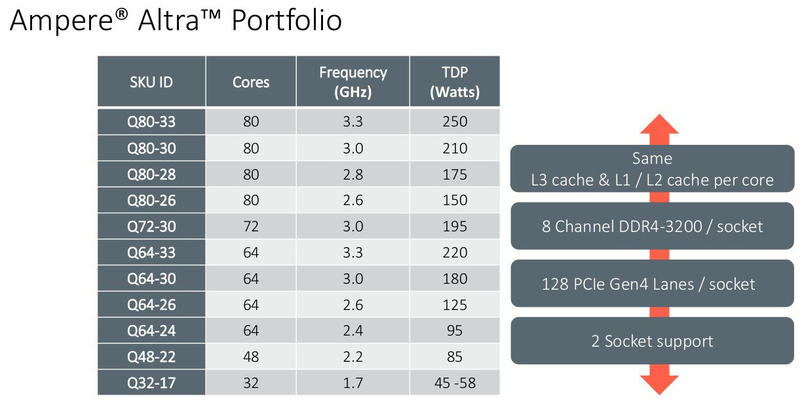
A feature of Altra is the absence of multithreading, which the manufacturer himself calls an advantage. The fact is that the abandonment of SMT made it possible to reduce the level of energy consumption - this is an indicator that is very important for the market of high-density server systems. Another reason named is increased security.
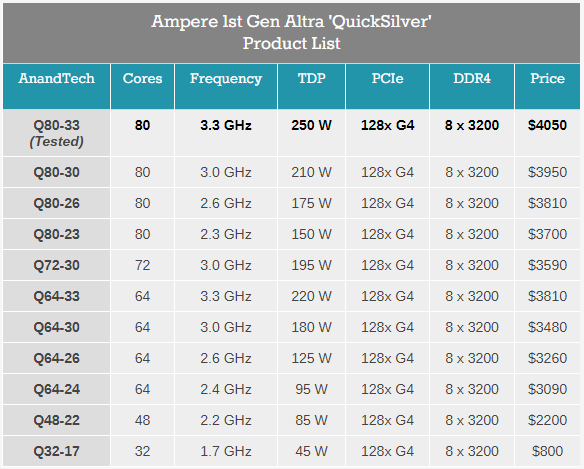
Another feature of the processor is that it always operates at the maximum frequency, reducing it only in some cases. At the same time, the thermal package is maintained at the highest possible level.
And now - about the tests
Test samples of processors that came to reviewers - two older models of 80-core Altra Q80-33 processors, which operate at a frequency of 3.3 GHz. By the way, the dual-processor version was created in partnership with the developer and supplier of OCR platforms, Wiwynn.
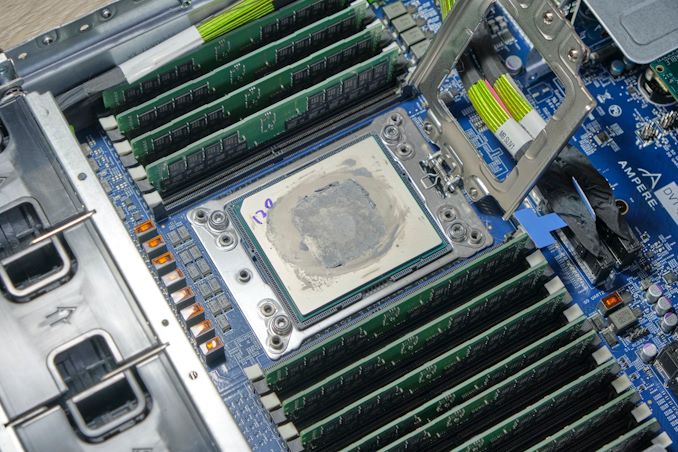
The processor is installed using a hinged frame, which is secured with five screws. The dimensions of the processor are surprising - 77 × 66.8 mm. As for the radiators, their contact area is small, about 25% of the total area of the processor heat spreader cover. The crystal itself is monolithic, it is produced using 7-nm technology. The radiators are equipped with a special heat dissipation mechanism - an evaporation chamber, thanks to which TDP 250 W is not a problem.
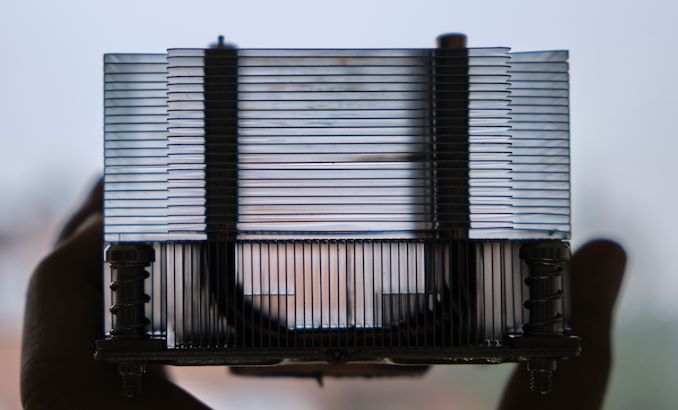
As for analogues in the x86-64 world, they are AMD EPYC 7742 (64 cores, SMT2, 225 Watt, $ 6950) and Intel Xeon Platinum 8280 (28 cores, SMT2, 205 Watt, $ 10009). At the same time, the cost of the chip from Ampere is only $ 4050 ("only" - when compared with the cost of competitors). Perhaps the price will be the main factor in attracting attention to the chip of corporate clients at first.
The test results, as mentioned above, are impressive. No, the new chips did not tear competitors to shreds, somewhere the results were similar, somewhere better, somewhere a little worse. In general, everything is at an excellent level.
The disadvantage of these chips is high latency, both within the same connector and interprocessor. This, according to experts from AnandTech, is the weak side of the new processors. But the problem is not fatal.

As regards the memory bandwidth tests, the results of the Altra Q80-33 are very good. In this test, the Xeon loses, which has only six channels, as opposed to eight for AMD and Ampere.
In the SPECint2017 and SPECfp2017 tests, the new chip performed very well - not worse than the Xeon Platinum 8280 and close to the AMD EPYC 7742. The results were low only in one case - in the tests for floating point calculations.
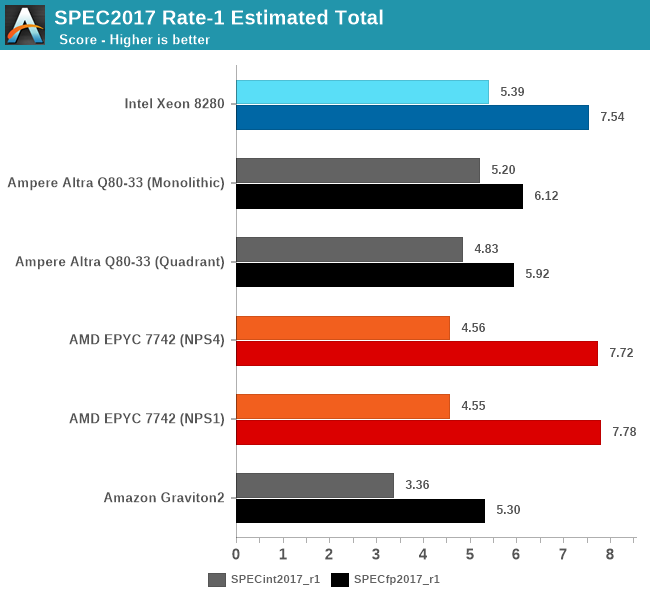
But in another test, another ARM processor, AWS Graviton2, performed well. The not very good result of the test of the chip from Ampere, perhaps, is due to the fact that the same Xeon can overclock up to 4 GHz, having two active cores.

The new chip showed excellent results in multithreading tests, outperforming the Xeon. Altra Q80-33 can be called the absolute champion in the class of dual-processor systems.
The situation is worse with the Java test results - but the problem here is the lack of SMT and raw software. In addition, the lack of multithreading is a problem.
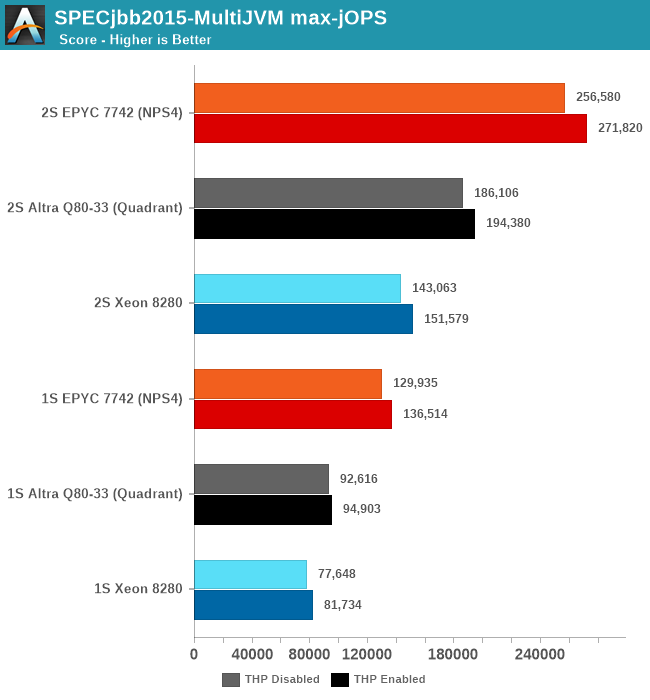
The new processor also performed well in compilation tests. In LLVM Suite, the results of the Altra Q80-33 are similar to those of the EPYC 7742. At the same time, ARM is doing well with energy efficiency. The new chip was on par with AMD in compression tests, MariaDB, nginx, and file server scripts.

Almost all reviewers who tested the processors responded well to the new product. It managed to maintain a low level of power consumption with a demonstration of high performance - according to this indicator, the processor was approximately equal to AMD EPYC 7742. There are, of course, certain drawbacks, but they are not fatal.

Reviewers have published a lot of information regarding the tests, so if you need more data on the tests being performed, the results and expert opinions, AnandTech , ServeTheHome and Phoronix are worth looking at .
